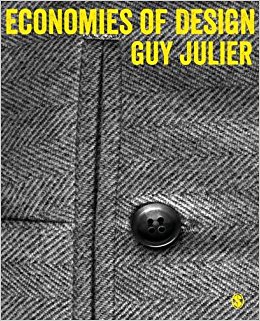
List of figures and tables
List of illustrations
Acknowledgements
one Introduction: Contemporary Capitalism and the Rise of Design
The rise of design: quantities and qualities
Neoliberalisation
Deregulation, new economy, financialisation, austerity
Design objects of contemporary capitalism
Economies of Design: structure and approach
two Design Culture and the Neoliberal Object
Postmodernism and post-Fordism
London 1986
Object environments, intensified movement, episodic measurement
Human-machine interaction
The neoliberal sensorium
Budapest 1996
Conclusion
three Design Work
Design, art education and autonomy
The creative industries and design
Design knowledge in practice
Creativity, design work and performativity
The designer in the design studio
Design work and economic fluctuations
Precarious labour in design
Flexible labour and the symbolic role of design work
Network sociality and economic geographies of design
The uber precariat and platform capitalism
Conclusion
four Global Trade and Mobilities
Global trade
The New Economy, globalisation and the ‘second unbundling’
Fast fashion and delocalisation
Full-package supply and the relocalisation of design in Turkey
Global relocalisation: slow cities, transition towns and makerspaces
Mobilities
Migration and design intensities
Migration, McDonaldization and design extensities
Mobile object environments
Conclusion
five Financialization and Assets
Show homes: ownership and speculation
Makeovers
Clone towns
‘Compelling experiences’: retail developments and property companies
The planning and design of retail spaces
Rental, investment and retail brands
The spatial fix
Conclusion
six Intellectual Property
The political economy of IP registration
The competition of monopolies
1-click but many patents: global corporations
Metadata in the entertainment industry
The design of franchises
Designers and intellectual property
Fashion and furniture
‘No Photography!’: trade fairs and cycles of design innovation
Conclusion
seven Informal and Alternative Economies
Definitions
Shanzhai: a business practice and a cultural movement
The scale and operations of shanzhai
From shanzhai to the mainstream economy
Creativity and policy in China
Jugaad and frugal innovation in India
The limits of jugaad
Horizontalidad: economic crisis and self-organisation
Activist design and economic crisis in Argentina
Creative timebanking
Conclusion
eight Public Sector Innovation
New objects of design for public sector innovation
Consultant- and government-driven public sector design
New Public Management
Public sector marketisation and consumption
Responses to New Public Management
Austerity
Towards networked governance
Design in networked governance
Virtualism
Behaviour change
Design citizenship
Conclusion
nine Studying Economies of Design
Beyond design management
Design Culture Studies
Economic sociology
Design and neoliberalism
Economies of qualities
Materialisation and finance
Concluding remarks
References
Index